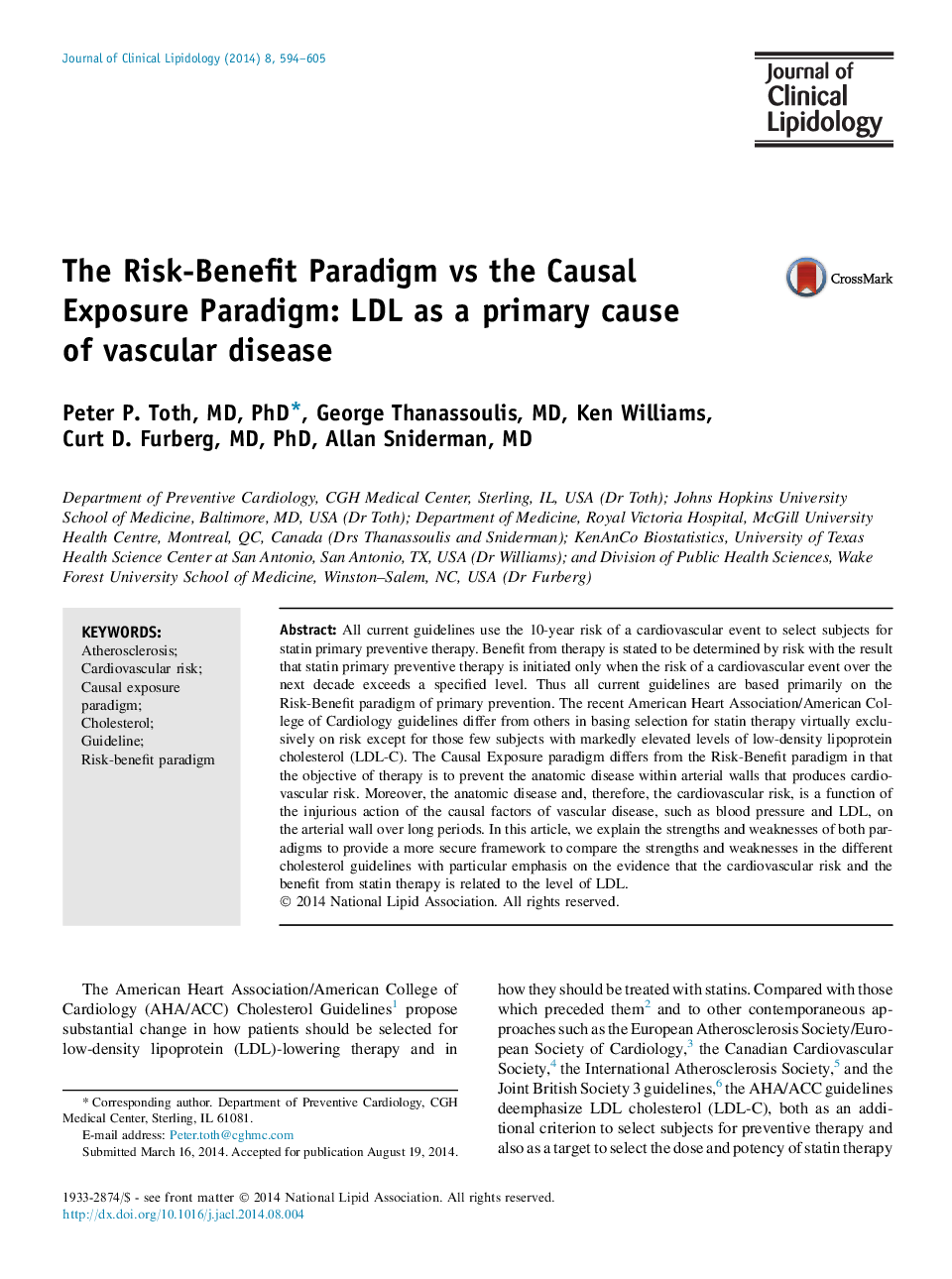| Article ID | Journal | Published Year | Pages | File Type |
|---|---|---|---|---|
| 5985837 | Journal of Clinical Lipidology | 2014 | 12 Pages |
âºAll current guidelines use the 10-year risk of a cardiovascular event to select subjects for statin primary preventive therapy. The benefit of statin primary preventive therapy is indicated only when the risk of a cardiovascular event over the next decade exceeds a specified level. Thus all current guidelines are based on the Risk-Benefit model of primary prevention.âºThe recent American Heart Association/American College of Cardiology Guidelines do differ from the others in basing selection for statin therapy virtually exclusively on estimated cardiovascular risk except for those few subjects with markedly elevated levels of low-density lipoprotein (LDL) cholesterol.âºThe LDL-Causal Exposure Model differs from the Risk-Benefit model in that the objective of therapy is to prevent the anatomic disease within the arterial walls that produces the cardiovascular risk. In this article, we explicate the strengths and weaknesses of both models to provide a more secure framework to compare the strengths and weaknesses in the different cholesterol Guidelines.
All current guidelines use the 10-year risk of a cardiovascular event to select subjects for statin primary preventive therapy. Benefit from therapy is stated to be determined by risk with the result that statin primary preventive therapy is initiated only when the risk of a cardiovascular event over the next decade exceeds a specified level. Thus all current guidelines are based primarily on the Risk-Benefit paradigm of primary prevention. The recent American Heart Association/American College of Cardiology guidelines differ from others in basing selection for statin therapy virtually exclusively on risk except for those few subjects with markedly elevated levels of low-density lipoprotein cholesterol (LDL-C). The Causal Exposure paradigm differs from the Risk-Benefit paradigm in that the objective of therapy is to prevent the anatomic disease within arterial walls that produces cardiovascular risk. Moreover, the anatomic disease and, therefore, the cardiovascular risk, is a function of the injurious action of the causal factors of vascular disease, such as blood pressure and LDL, on the arterial wall over long periods. In this article, we explain the strengths and weaknesses of both paradigms to provide a more secure framework to compare the strengths and weaknesses in the different cholesterol guidelines with particular emphasis on the evidence that the cardiovascular risk and the benefit from statin therapy is related to the level of LDL.
